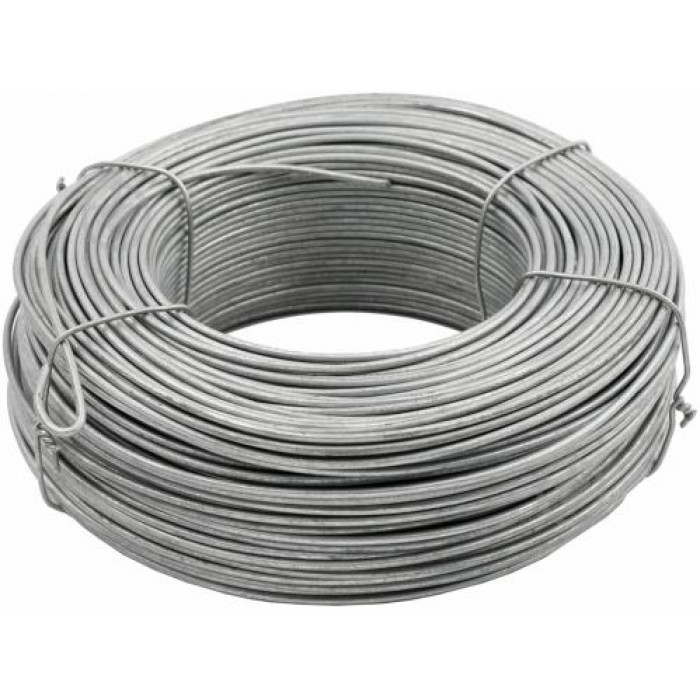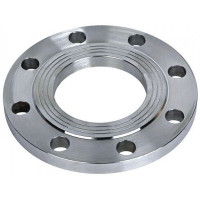Zhitomir wire stainless, copper, brass, aluminum, black, nichrome, egoza Cossack, barbed cutting of coils and delivery
Stainless wire is a type of rolled metal made of heat-resistant, anti-corrosion and high-alloy steel, made in the form of a long universal structure resembling a thread or cord. As a rule, it has a round cross section. Due to its properties, stainless wire has been widely used in many areas: mechanical engineering, oil production, chemical industry, construction, food industry, medicine and much more. Classification Four types of stainless wire are produced: knitting; cold-worked; welding wire; spring stainless wire. stainless steel wire According to the method of production, cold-rolled and hot-rolled wires are divided. Depending on the type of processing of the finished product (metal surface), stainless steel wire is divided into the following types: oxidized; copper-plated; light wire (no oxides). According to the accuracy of execution, stainless steel wire is divided into normal and high accuracy. Depending on the physical properties of stainless (n / f) wire, the first and second classes of plasticity of the product are distinguished. Marking, packaging and storage Stainless wire is produced in accordance with GOST 18143-72 from anti-corrosion, heat-resistant alloy steel with a cross section of 0.2 to 7.5 mm. Wire marking determines its chemical composition, production technology and type of metal surface treatment. The numbers indicate the percentage of elements that define the main properties of the product. As an example - stainless wire 12X18H10T: 12 - carbon content is not more than 0.12%; X18 - chromium 18%; H10 - nickel 10%; T - about 1% titanium. stainless steel wire The presence of other elements, the content of which does not exceed 1%, is not indicated in the marking. The letter “X” is indicated in the designation of cold-rolled stainless steel wire. Oxidized stainless steel wire has a tint color and is marked with the letter "T". Basically, this type of marking is subjected to wire produced by heat treatment (hot-rolled). Light stainless wire without tarnish and oxides is designated "TC". The letter "P" is added to the marking of the product of increased strength. The plasticity class is indicated by the corresponding numbers: 1 - the first, 2 - the second. Stainless steel wire requires careful handling during transportation and storage. Depending on the diameter, it is packed in coils or wound on coils and protected from mechanical damage by film or paper. Transportation is carried out mainly in covered vehicles. Stainless steel wire is stored in closed heated warehouses. Production Stainless steel wire is a long metal structure made in the form of a cord. All over the world it is made in two ways: by cold drawing or by drawing heat-treated metal blanks (hot drawing). As a rule, the cross section of the stainless steel wire is round, in exceptional cases it can be oval, square, trapezoidal or hexagonal. stainless spring wire The wire is sold to the consumer in coils, coils, coils. The quality of the resulting products depends on the method of production. The resulting wire is subjected to subsequent surface treatment, depending on which oxidized or light products are obtained. Oxidized stainless steel wire is widely used in the electrical industry. Quality requirements High-alloyed stainless wire contains from 0.01 to 0.24% carbon and more than 30% alloying elements. The base is iron. The surface must be smooth without pits, nicks, delamination, cracks and clean - without film, scale and other contaminants. On the surface of the wire, scratches, individual dents, local ripples, scratches, including tightened ones, are allowed. The presence of flaws is allowed, the depth of which does not exceed the maximum deviation in accordance with the diameter of the section. stainless wire GOST Quality control of stainless wire is carried out in several complex ways, which include: Accurate control in accordance with GOST of the diameter of the rod and curl. Testing of finished products for deformation and rupture. Measurement of electrical resistance level. Determination of the composition of the chemical elements of the steel used in the section. Scope The wire from a stainless steel is used in many areas of economic activity. Products made of copper and brass are characterized by high resistance to corrosion, but at the same time they are much softer and less resistant to tearing. The electric power industry is one of the areas where stainless wire is most in demand. Due to the resistance to chemical influences and high temperatures, stainless products are used in the manufacture of electrical equipment and important components. In the oil industry, it is used in the manufacture of drilling equipmentania and oil pipelines. Stainless steel wire is used in furniture production. Food industry. In the production of equipment for processing, storage and transportation of food products. Stainless steel has good hygienic properties. Use in the chemical industry due to resistance to oxidation and other chemical attack. In the production of medical equipment, including high-precision, surgical instruments. stainless steel wire for semi-automatic machine In construction for the production of reinforcing elements. In mechanical engineering in the manufacture of springs, cables, braids. Elements made of stainless wire are resistant to mechanical stress, have proven themselves well both as part of the structure and as independent elements. For the manufacture of household items: household appliances, appliances, dishes, etc. For welding. This is one of the main applications of stainless wire. It is actively used in aircraft and shipbuilding, automotive industry, for the construction of structures in aggressive environments, etc. Welding stainless wire Stainless wire can be used for any type of welding work. Electrodes and welded meshes are made from it. It is used in construction for the construction of complex structures. Welding (surfacing) stainless steel wire for a semi-automatic machine is a consumable for welding work in a shielding gas environment or without them. The resulting seam does not require additional heat treatment.
Specifications of Stainless Wire Range
The technical parameters of a stainless steel metal cord are regulated by GOST 18143-72. According to this standard, stainless steel wire is produced cold-drawn (X), heat-treated. Depending on the processing method, the finished thread is light (TS), oxidized (T). According to the production accuracy, a stainless steel metal cord can be of normal or increased accuracy. According to the plasticity parameters, such a wire is divided into 2 classes.
The available diameters of the stainless steel metal cord are in the range of 0.2…7.5 mm. Stainless steel grades used in the manufacture of wire:
O=0.2…1 mm – 12X18H9T, 12X18H10T, 08X18H10;
d \u003d 1.1 ... 3 mm - 12X18H9T, 12X18H10T, 12X18H9;
O=1…6 mm - 12X13, 20X13, 30X13, 40X13, 10X17H13M2T, 10X17H13M3T;
d=3.4…6 mm - 17X18H9;
O=3.4…7.5 mm - 12X18H9T, 12X18H10T.
Stainless steel wire is divided into groups according to the tensile strength index. A metal cord with a diameter of more than 0.8 mm made of stainless steel grades 17X18H9, 12X18H9, 12X18H10T, 12X18H9T must withstand 4 kinks.
The chemical composition of stainless wire is also regulated. According to current regulations, a highly alloyed stainless steel cord must contain 0.01 ... 0.24% carbon and 30% alloying components. The basis of the metal thread is iron.
Scope of stainless steel wire
The resistance of stainless steel cord to corrosion makes it the best option for use in aggressive environments. At the same time, stainless wire is more elastic and durable than copper, brass counterparts. Stainless steel cord is used in the following areas:
electric power industry - important components, electrical equipment are made from such wire;
production of furniture, household accessories and appliances;
production of equipment for the food, machine-building, chemical, oil refining industries;
welding of structures exposed to aggressive media.
Stainless steel wire is released in coils. Preservation of the metal cord is carried out using waxed paper, polymer film, glued or stitched canvas.
For welding of refractory metals, such as stainless steel, in a shielding gas environment, a stainless welding wire is used. It is indispensable for welding works in shipbuilding and mechanical engineering, food industry, in the production of critical tanks, boilers, pipelines, etc.
Features of stainless steel welding wire
It is made of alloyed heat-resistant steel with the obligatory addition of silicon and carbon. Silicon is necessary to increase the strength and reliability of the seam, carbon provides a high degree of protection of the seam from intercrystalline corrosion. Also, the composition may include chromium and nickel - they increase the resistance of the seam to the formation of rust.
Types of stainless steel welding wire
The composition of the wire must match the composition of the stainless steel to be welded, otherwise the connection will be fragile. In this regard, it happens: low-alloyed wire - it contains up to 2.5% of alloying elements (chromium, nickel, carbon, etc.); medium-alloyed - with additives of elements from 2.5 to 10%; highly alloyed - contains additives more than 10 to 20 - 25%.
Stainless steel wire is one of the highest quality types of long drawn steel, which is made from high-alloy, heat-resistant steels and is distinguished by:
high strength, wear resistanttew and durability;
inert to high humidity and temperature changes;
environmentally friendly and hypoallergenic;
has a high anti-corrosion resistance;
offers an attractive appearance;
Designed for wide industrial use.
Stainless steel wire has improved specifications and usually sells for a higher price than other types of wire products. Its main application is stainless steel structures and stainless steel welding in the oil refining, oil producing, chemical, energy, construction and engineering industries, where high strength and long service life are required while maintaining the main technical characteristics.
No questions about this product, be the first and ask your question.


